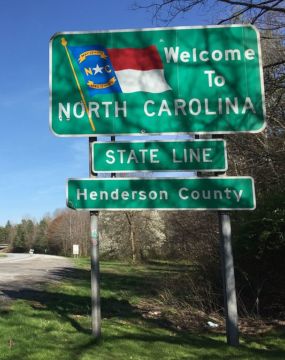Keep up with our latest demographic insights

Nationally, there are 383 metropolitan statistical areas (MSA), which are defined as an economically integrated set of counties with a core central city with a population of 50,000 or more. They range in size from Carson City, Nevada (55,414) to the New York-Newark-Jersey City MSA (19,979,477) which crosses New York, New Jersey, and Pennsylvania. Within North Carolina, there are 17 unique metro regions, ranging from Goldsboro (123,248) to Charlotte-Concord-Gastonia (2,569,213 across NC and SC). With…

The percentage of the state’s total population not born in North Carolina continues to rise. Recent estimates from the American Community Survey indicate that 43% of the overall population is non-native, up 1 percentage point from previous five-year estimates when this share was 42%. This share is even higher among the adult population. Nearly half of all individuals 18 and older were born somewhere else and this group has grown faster than the population overall.…

In the next few months, the U.S. Census Bureau is releasing multiple data products that will provide new years of data, as well as some new detail not currently available. Here are the four most valuable updates for better understanding NC and its changing demographics: New county-to-county migration flow tables updated with 2011-15 data. The release of these tables and the update to the Census Flows Mapper web application will be the first time that non-overlapping…
One of my favorite stories of North Carolina’s demographic growth and change is the “halfback.” These are transplanted Northerners, moving out of Florida to mid-south states halfway back to the North -- to the Carolinas, Virginia, Tennessee, and Georgia. In North Carolina, much of the conversation focuses on the large in-flow of New Yorkers into the state. There are significant anecdotal reports of the halfback phenomenon, but what do the data say? In the most…
In March 2015, there were 7.1 million eligible voters (citizens 18+) living in the state according to estimates from the Current Population Survey. Of these, 557,000 or 8% moved to North Carolina between 2010 and 2015. This post provides a brief profile of these new to North Carolina potential voters. Origin The largest share moved from Florida (88K), representing 16% of all eligible voters new to North Carolina since 2010. Another 67,000 or 12% moved…
Nationwide, 58.7% of U.S. residents currently live in the same state they were born in, according to 2010-2014 American Community Survey data. This ranges from a high of 78% in Louisiana to a low of 25% in Nevada. North Carolina is similar to the national average: 57.8% of North Carolina state residents were born here. Among North Carolina’s counties, the proportion NC-native ranges from less than 1 in 3 residents in both Currituck (25.5%) and…
“When the Current Population Survey started collecting migration information in 1948, about one-in-five people moved over a one-year period. Today, that number has fallen to about one in nine.” – David Ihrke, U.S. Census Bureau Moving is a common experience. The average American will move about 12 times in their lifetime. Most of these moves are clustered in young adulthood, as individuals move to go to school, start jobs, and form families. In North Carolina,…
Within the span of two days, I received two emails asking about the most common sending states for new residents to North Carolina. The most recent inquiry wrote: “What state do most people move from when coming to NC? My guess is NY- or the North East area. Another person I know is insistent that more people move here from Florida.” In this debate, both people are right, depending on how you measure migration. Migration…
Forty-two percent of North Carolina residents were born in another state or country. In 1950, this proportion was only 15%. The share of North Carolina residents born in state declines steadily with age until prime working-ages, and then begins rising again. Between ages 27 and 50, more than half of North Carolina residents were born in another state or country. North Carolina’s trends in the proportion of native-born residents by age look similar to those of…
5. Non-NC Native Population by County Two of every five North Carolina residents (42%) were born in another state or country, but this ranges from 14% in Bertie County to 74% in Currituck. 4. Top 10 Non-English Languages Spoken in North Carolina After English, Spanish has long been the most common language spoken in North Carolina, but 4 new languages entered the top 10 over the past 3 decades. 3. Why do people move to…
Your support is critical to our mission of measuring, understanding, and predicting population change and its impact. Donate to Carolina Demography today.